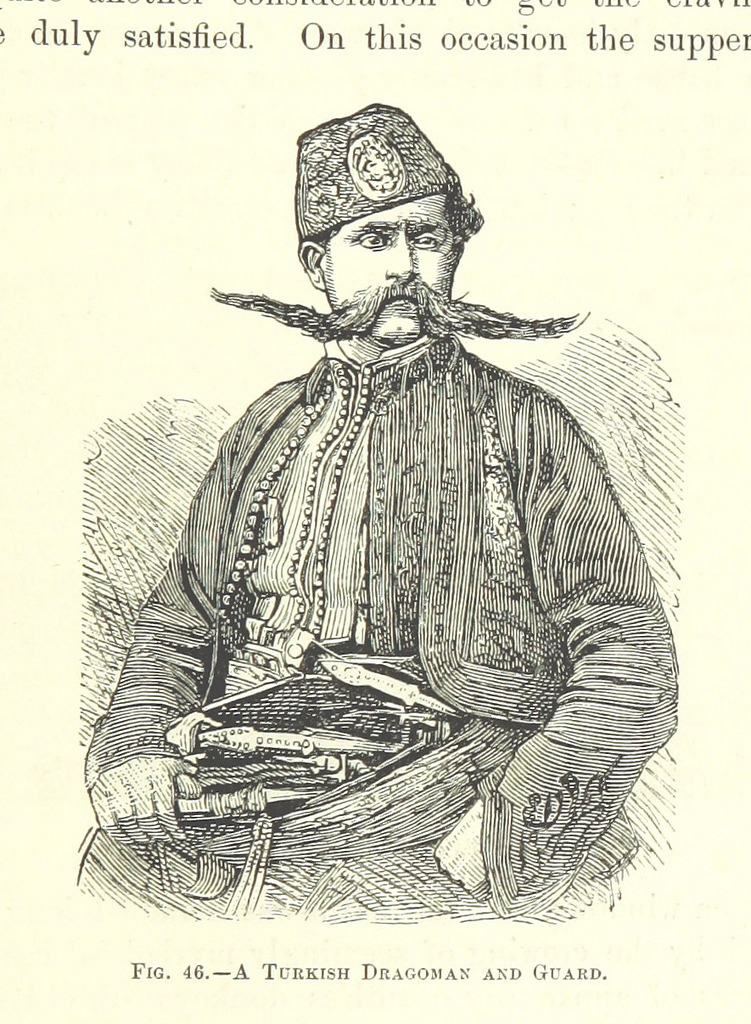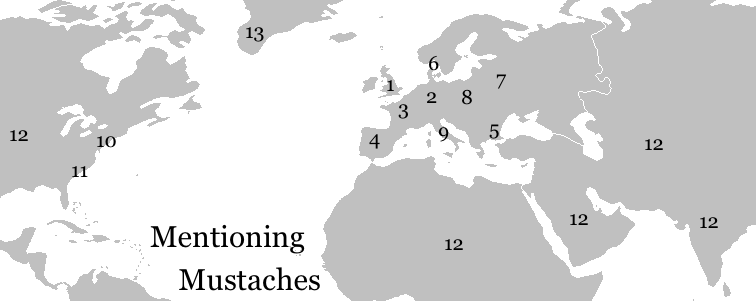 It seems the internet's obsession with 19th century facial hair isn't going away any time soon. And though I'm loathe to encourage it, I feel compelled to point out that in our narrow focus on the era's mustaches - waxed, curled, bushy, whatever - we've completely missed out on something more remarkable: the surprising proportion of 19th century facial hair that was grown well outside the region we even associate with facial hair at all. It turns out everyone from Civil War generals to Danish explorers - and that was pretty much everyone back then - could pull off a full beard just in the area below or behind their jawbone. They were growing out their side-burns to the point they became veritable side beards, or letting their mutton-chops migrate down to that spot where you hold your fingers when you take your neck-pulse. In any case, I am grateful for the work of the folks at Mentioning Mustaches who have seen fit to try to catalog the full range of 19th century facial hair with the help of images digitized by the British library. You can scroll through the evidence yourself on the archive of the blog, which despite its name is basically a compendium of neck bears and what are tagged "nuttin chops," which I assume is a portmanteau for Neck Mutton Chops.
It seems the internet's obsession with 19th century facial hair isn't going away any time soon. And though I'm loathe to encourage it, I feel compelled to point out that in our narrow focus on the era's mustaches - waxed, curled, bushy, whatever - we've completely missed out on something more remarkable: the surprising proportion of 19th century facial hair that was grown well outside the region we even associate with facial hair at all. It turns out everyone from Civil War generals to Danish explorers - and that was pretty much everyone back then - could pull off a full beard just in the area below or behind their jawbone. They were growing out their side-burns to the point they became veritable side beards, or letting their mutton-chops migrate down to that spot where you hold your fingers when you take your neck-pulse. In any case, I am grateful for the work of the folks at Mentioning Mustaches who have seen fit to try to catalog the full range of 19th century facial hair with the help of images digitized by the British library. You can scroll through the evidence yourself on the archive of the blog, which despite its name is basically a compendium of neck bears and what are tagged "nuttin chops," which I assume is a portmanteau for Neck Mutton Chops.
As part of a collaborative effort with Afternoon Map, however, you can also browse their collection cartographically. The first map is arranged by facial geography, the second by global geography. Click on the links below to see stunning 19th century examples of these styles:

1. The Mustache
2. The Beard
4. Soul Patch*
5. Goatee
6. Mutton Chops
7. Neck Beard
9. Eyebrows
Mentioning Mustaches is also tagged to allow you to view facial hair by its country of origin. Click on the links for examples of 1) British, 2) German, 3) French, 4) Spanish, 5) Balkan, 6) Scandinavian, 7) Russian, 8) Eastern European, 9) Italian, 10) American / New England, 11) Confederate, or 12) Non-Western facial here.** Meanwhile 13) brings you examples of mustaches with the much sought after Walrus tag, while at 14) you can see examples of European facial hair in colonial settings.
** While some may object to the essentialism inherent in this tag, I think a thorough review of the facial hair in question will demonstrate that it is appropriate given the nature of the archival material available.





